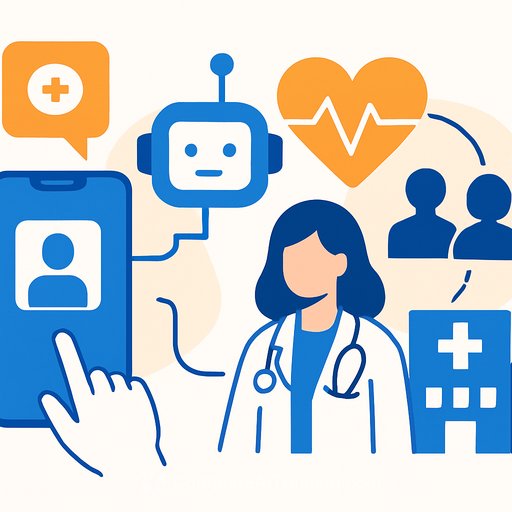From 200 Dashboards to On-Demand Procurement Insights
A leading multinational pharma and medical company had a simple problem with big consequences: 200+ dashboards and fragmented reports slowed procurement decisions. An MIT Supply Chain Management capstone showed a cleaner path-use a Generative AI chatbot to replace manual reporting with self-service analytics and automated visualization.
The result: faster answers, fewer bottlenecks, and higher confidence in decisions. For managers, this is a practical blueprint for shifting teams from report chasing to insight on demand.
Key takeaways
- Challenge: 200+ dashboards created reporting inefficiencies and delayed decisions.
- Solution: An AI chatbot delivered self-service analytics and automated visualizations from natural language prompts.
- Impact: 96% accuracy across core analytical use cases; analysis time cut from hours to seconds.
- Technology: Large language models with Retrieval Augmented Generation (RAG), prompt engineering, and open-source visualization tools.
Why dashboards stalled procurement
Static dashboards couldn't keep up with the volume of questions and the pace of planning cycles. Teams spent hours downloading reports, merging tables, and auditing for consistency.
The process was slow, error-prone, and hard to scale. The bigger the operation, the more time was lost between a question and a decision.
The shift: conversational analytics
The team built a chatbot that speaks the language of procurement. Users ask questions in plain English. The system returns charts with trendlines, averages, and short explanations-no pivot tables, no back-and-forth with analysts.
It delivered accurate, context-aware answers by pairing a language model with company data through RAG and targeted prompt engineering. That kept responses relevant and consistent with internal definitions.
What it can do out of the box
- Summary analysis: Quick rollups, spend by category, supplier performance snapshots.
- Trend analysis: Month-over-month changes, moving averages, seasonality highlights.
- Exploratory analysis: Guided questions that surface patterns and anomalies worth a deeper look.
Measured impact
During testing, the chatbot produced accurate and relevant responses for 96% of queries across the three core use cases. Response time dropped from hours to seconds.
Teams reported faster alignment in planning and review meetings because insights were generated live, in context, and in a format everyone could discuss.
How it works (in plain terms)
- Natural language interface: Managers ask questions directly; no need to learn a BI tool.
- RAG for context: The model fetches approved company data and definitions before answering, improving accuracy and consistency. For an overview of RAG, see the original paper on arXiv.
- Prompt engineering: Guardrails and templates standardize logic and language for procurement scenarios.
- Automated visualization: The system generates charts and annotations on the fly using open-source tools.
What leaders should do next
- Start with three use cases: summary views, trends, and EDA. Keep scope tight and measurable.
- Connect approved data only: Define the single source for spend, supplier, and category tables. Document business definitions.
- Embed governance: Role-based access, audit logs, and privacy controls. Make safe defaults the standard path.
- Decide build vs. buy: Open-source tools offer flexibility; vendors may speed time-to-value. Pilot before scaling.
- Measure outcomes: Track time-to-insight, user adoption, and decision lead time. Tie wins to cost, risk, and service.
- Drive adoption: Train managers on prompt patterns. Use champions. Put the chatbot into recurring meetings and standard workflows.
Where it extends beyond procurement
Early tests in adjacent functions showed value for more advanced analytics as well. Any domain with recurring questions over structured data can benefit-supply planning, quality, finance, and operations.
Risk, compliance, and control
Treat legal and privacy guardrails as part of the architecture, not an afterthought. Keep sensitive data protected, enforce access by role, and log interactions for audit and learning.
Set clear guidance on what the model can retrieve, what it should refuse, and how to escalate complex requests to analysts.
Bottom line for management
Don't rip out your BI stack. Reduce friction in the workflows that create the most delay. A conversational layer on top of clean data can remove busywork and speed decision cycles without adding another dashboard to maintain.
If your team is exploring this space and needs practical training on prompts and workflows, see our curated programs for different roles at Complete AI Training.
FAQ
Q: What problem was this research designed to solve?
A: It addressed inefficiencies in procurement analytics caused by fragmented dashboards and manual reporting that slowed data-driven decisions.
Q: How does the Generative AI chatbot improve procurement analytics?
A: Users query data in natural language. The system returns visualizations with annotations and short explanations, removing repetitive reporting tasks.
Q: What technologies support the solution?
A: Large language models with RAG, prompt engineering, and open-source visualization tools for flexibility and scalability.
Q: What were the key results of the pilot?
A: Accurate responses for 96% of test queries, analysis time cut from hours to seconds, and improved collaboration in procurement planning and reviews.
Your membership also unlocks:






